Property from a Private Collection, Tokyo Takeo Yamaguchi Sequence of Squares 1956 oil on board, in artist's frame 23 7/8 x 17 7/8 in. (60.7 x 45.5 cm) Signed, titled and dated in Japanese "連続した四角 一九五六年一〇月 山口長男 [Sequence of Squares 1956 October Yamaguchi Takeo]" on the reverse.
Provenance Mudo Gallery, Tokyo Acquired from the above by the present owner Literature Yamaguchi Takeo Sakuhin-Shu, Tokyo, 1981, no. 121 Catalogue Essay Born in Seoul under Japanese rule in 1902, Yamaguchi returned to Japan when he was nineteen years old. While studying at the Tokyo Art School (today’s Tokyo University of the Arts) in the 1920s, he immersed himself in Yo-ga, or Western-style painting using oil paint and canvas. After graduating in 1927, he moved to Paris and became acquainted directly with the works of Picasso, Braque, Modigliani, and Ossip Sadkine. After returning to Tokyo in 1931 Yamaguchi became a key artist in the vanguard art scene in Japan, eventually joining a circle of cutting-edge artists such as Jiro Yoshihara (1905–1972; the founder of the Gutai Art Association in the 1950s) to establish an artist association Kyushitsu-kai (Ninth Room Association) in 1938. Yamaguchi’s postwar abstraction, which evolved out of his longtime interest in Cubism, attests to the artist’s resolve in the search for pure form and experimentation. His signature style of geometric forms, built up with layers of paint applied by a palette knife against black background, reached its maturation in the mid-1950s. Sequence of Squares is highly representative of this style. Slightly awkward and disjointed ochre colored rectangles have more sculptural weight than a painterly touch, reflecting Yamaguchi’s prewar practice in Cubist sculpture while the crisscross pattern creates a relief-like depth resembling collage. While gestural movement and rugged surface of Art Informel was just starting to cause a whirlwind trend in Japan, Yamaguchi remained true to his commitment to pure form and singularly created his own language of post-Cubist minimalism. Yamaguchi’s individualism was duly commended in the year in which the present work was created when he was selected as a representing Artist of Japan for the 28th Venice Biennale. Read More
Property from a Private Collection, Tokyo Takeo Yamaguchi Sequence of Squares 1956 oil on board, in artist's frame 23 7/8 x 17 7/8 in. (60.7 x 45.5 cm) Signed, titled and dated in Japanese "連続した四角 一九五六年一〇月 山口長男 [Sequence of Squares 1956 October Yamaguchi Takeo]" on the reverse.
Provenance Mudo Gallery, Tokyo Acquired from the above by the present owner Literature Yamaguchi Takeo Sakuhin-Shu, Tokyo, 1981, no. 121 Catalogue Essay Born in Seoul under Japanese rule in 1902, Yamaguchi returned to Japan when he was nineteen years old. While studying at the Tokyo Art School (today’s Tokyo University of the Arts) in the 1920s, he immersed himself in Yo-ga, or Western-style painting using oil paint and canvas. After graduating in 1927, he moved to Paris and became acquainted directly with the works of Picasso, Braque, Modigliani, and Ossip Sadkine. After returning to Tokyo in 1931 Yamaguchi became a key artist in the vanguard art scene in Japan, eventually joining a circle of cutting-edge artists such as Jiro Yoshihara (1905–1972; the founder of the Gutai Art Association in the 1950s) to establish an artist association Kyushitsu-kai (Ninth Room Association) in 1938. Yamaguchi’s postwar abstraction, which evolved out of his longtime interest in Cubism, attests to the artist’s resolve in the search for pure form and experimentation. His signature style of geometric forms, built up with layers of paint applied by a palette knife against black background, reached its maturation in the mid-1950s. Sequence of Squares is highly representative of this style. Slightly awkward and disjointed ochre colored rectangles have more sculptural weight than a painterly touch, reflecting Yamaguchi’s prewar practice in Cubist sculpture while the crisscross pattern creates a relief-like depth resembling collage. While gestural movement and rugged surface of Art Informel was just starting to cause a whirlwind trend in Japan, Yamaguchi remained true to his commitment to pure form and singularly created his own language of post-Cubist minimalism. Yamaguchi’s individualism was duly commended in the year in which the present work was created when he was selected as a representing Artist of Japan for the 28th Venice Biennale. Read More
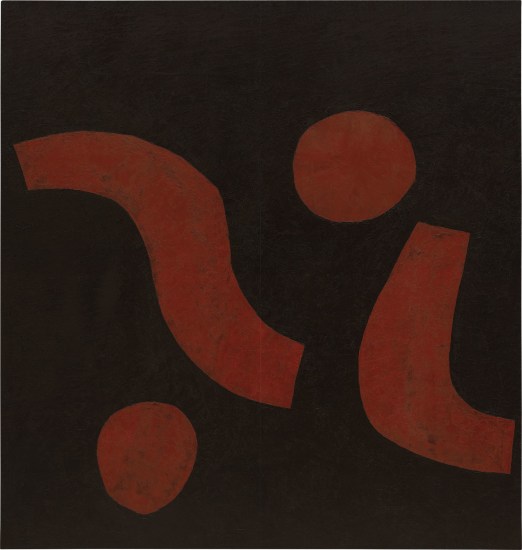



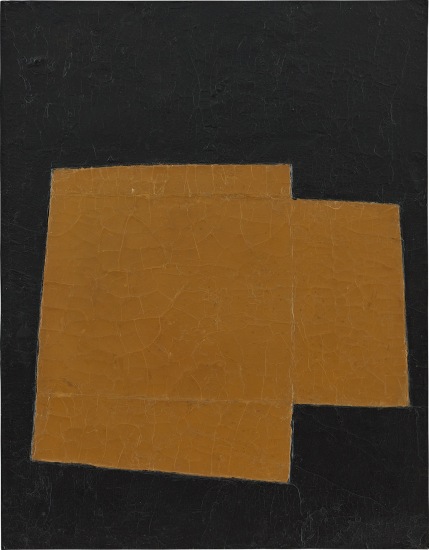
.jpg)
.jpg)
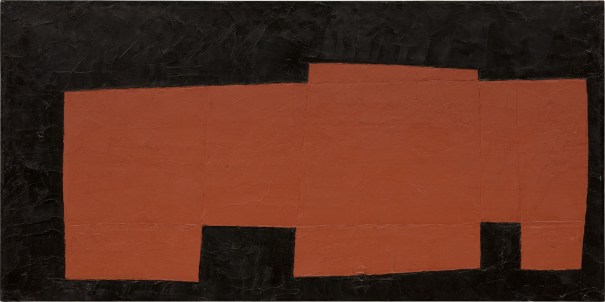
.jpg)
.jpg)
.jpg?w=400?width=1600&quality=70)


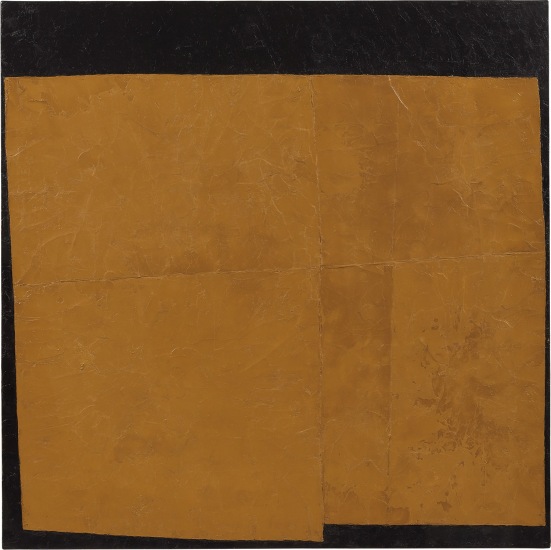
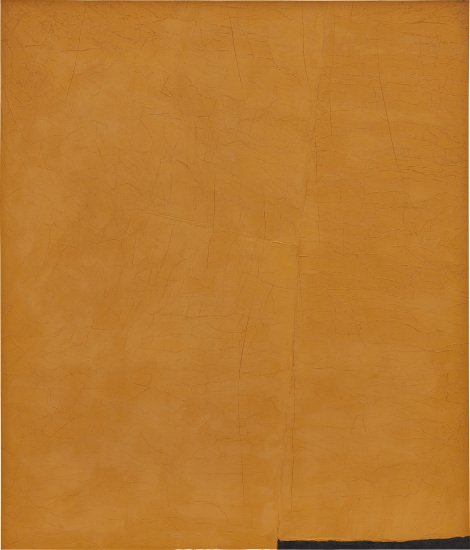
Try LotSearch and its premium features for 7 days - without any costs!
Be notified automatically about new items in upcoming auctions.
Create an alert